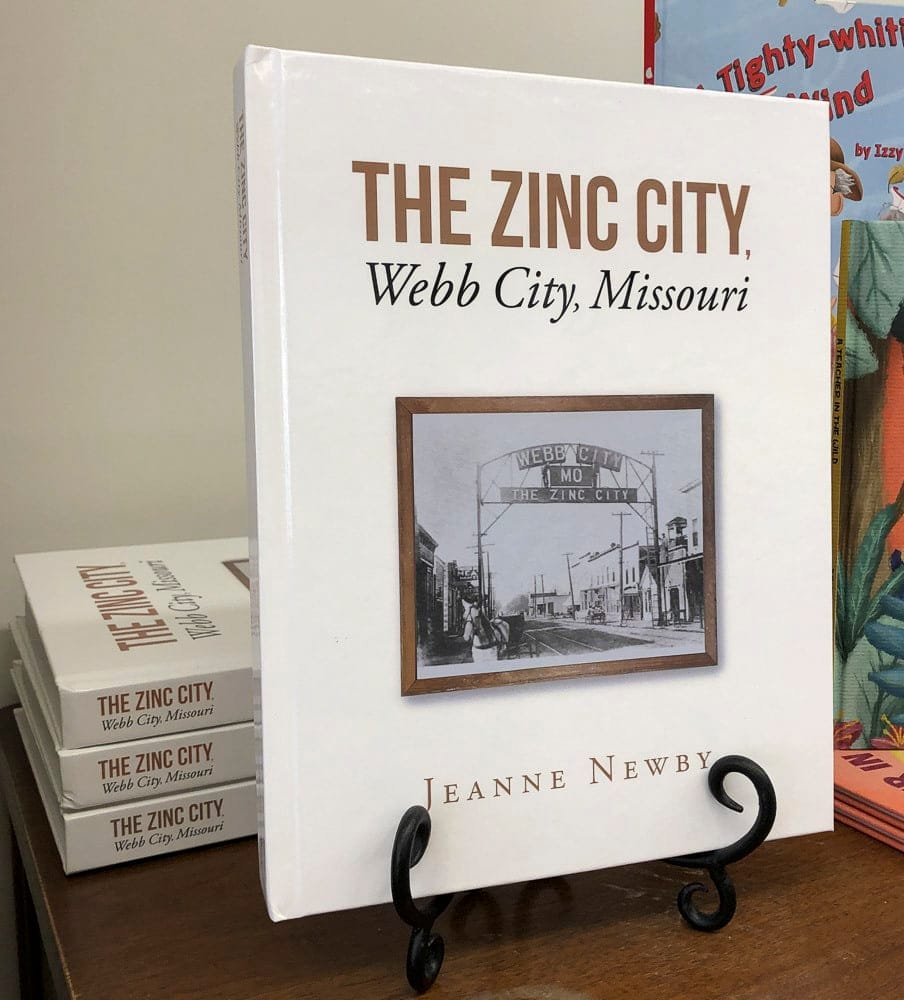
Many a tale has been told of Webb City during the “Mining Era.” The new town of wooden buildings, dirt streets, and no law to speak of, brought many a wild night. As the wooden buildings were eventually replaced by brick (to reduce the fire hazards), a pattern emerged. The east side of Allen (Main) Street housed the many saloons, pool halls, and gambling houses. The area from Allen (Main street) heading east to Carterville was referred to as “Red Hot Street.”
Dolph Shaner noted in his book, “The Story of Joplin,” that at one time Carterville was “dry” and Webb City remained “wet,” which created quite a bit of foot traffic as miners wandered across Ben’s Branch to have some fun. Shaner noted that when the Carterville miners staggered, crawled and or were carried back to Carterville as the Webb City saloons closed at midnight, they woke up the town with their yelling and shooting.
Carterville citizens decided they needed to band together to establish some law and order in their town. Squire Campbell, a deacon of the M.E. Church South headed the movement. To avoid fatalities, no guns were allowed to be used. The men who were deputized by the Marshall carried wooden hammer handles to be used as “billy clubs.” The miners said they were using pick handles and therefore dubbed the Carterville lawmen the “pick-handled police.”
The first Saturday night, the organized lawmen caught the miners off guard and there were some miners who spent the night in jail. The next Saturday night, the miners were prepared and fought off the new lawmen, took their billy clubs and ended the “pick-handled police league.”
Webb City’s east side of Allen Street continued to flourish as the miners spent all their hard earned money on the “evils of the devil.” Many a rough group from other towns entered Webb City on a Saturday night to have some shooting practice. Citizens were afraid to be out at night, and the wicked seemed to be taking over the town.
Norval Matthews stated in his 1976 commemorative booklet, “City of Webb City,” that “in spite of the efforts of church people and law enforcement officers, Webb City at this adolescent period of her existence at times became a rip-snorting, rioting, mass of lusty humanity.”
Eventually, peace and harmony rested on the streets of Webb City. There were still saloons, pool halls and gambling, but the law seemed to have control.
According to Marvin VanGilder’s book, “Jasper County, The First Two Hundred Years,” one of the favorite pastimes from pioneer days into the first quarter of the 20th Century was “foot racing.” A big event in Joplin, it didn’t take long for the practice to head over into Webb City. VanGilder told of a Webb Citian named Robert “Buck foot” Boatright who developed foot racing into a fine art. The reputation of Boatright, a saloonkeeper included his shenanigans as the leader of a band of miners and businessmen who were dubbed the Buck foot Gang. They had a foot-racing scam that netted them close to $3 million dollars from unsuspecting gamblers. There was a race track in the northeast part of Webb City where the “Webb City Athletic Club” used to stage their foot races. This group had no shame as they had fixed races, paid off winners with satchels full of newspaper instead of money, or held the money in a wall safe for safe keeping only to open the safe later and find it empty. Law officials stated that the safe had a false back and as soon as the money was put in the safe, the men in the next room would remove it.
Boatright eventually opened a commercial gymnasium in the upper rooms over a pool hall on Allen (Main) Street. The building was located on the southeast corner of Daugherty and Allen. There were many stories about the new establishment, but nothing documented. Bets on boxing matches, foot races, and other gambling activities were rumored to have taken place. During a rather questionable foot race scam, Boatright left the area by dark of night and according to VanGilder, he subsequently died in Kansas City following a workout at a gymnasium.
Decent ladies did not walk on the east side of Allen Street, as it was a sure way to ruin your reputation. When the Middlewest Building, the first opera house of Webb City, was built in 1883 on the southeast corner of Allen (Main) and Main (Broadway), it was very important that ladies be let out of the buggy directly in front of the opera house or across the street and enter into the opera house without coming in contact with the activities of the east side of Allen Street. The opera house was upstairs and the downstairs had businesses that also needed to be avoided by the genteel ladies. Originally, the two-story Middlewest Opera House faced Main (Broadway) Street. In later years the building was remodeled and the building became a three-story building and faced Allen (Main) Street.
By 1937, Webb City had gained the reputation of being a “decidedly church town” according to Miss Henrietta Crotty in her book, “A History and Economic Survey of Webb City Missouri.” She stated that “Webb City has 20 active churches which have a morally uplifting effect on the community.” In her survey, Miss Crotty doesn’t mention how many of those notorious saloons, pool halls or gambling houses still existed on Main Street.
A 1947 directory lists 23 churches, six liquor stores, two pool halls, and only two taverns. Some of the taverns weren’t listed but existed!
But, the shoot ’em up days that existed in Webb City’s early days, soon gave way to civilization. There were still occasional swindlers in the midst, but on the whole, Webb City didn’t take too long changing into the wonderful safe community we all remember as kids. Of course, even into the sixties, we (kids) were still forbidden to walk on the east side of Main Street. Old habits die hard!
Hotel Maine located on East Broadway (named Main Street before 1922).

Jeanne’s new book, “The Zinc City, Webb City, Missouri” is now available at Webb City Chamber office and other local retailers, such as Maggie Jane’s Gifts, at 8 S. Main St.

© All Rights Reserved 2021
DIY website design by Bob Foos